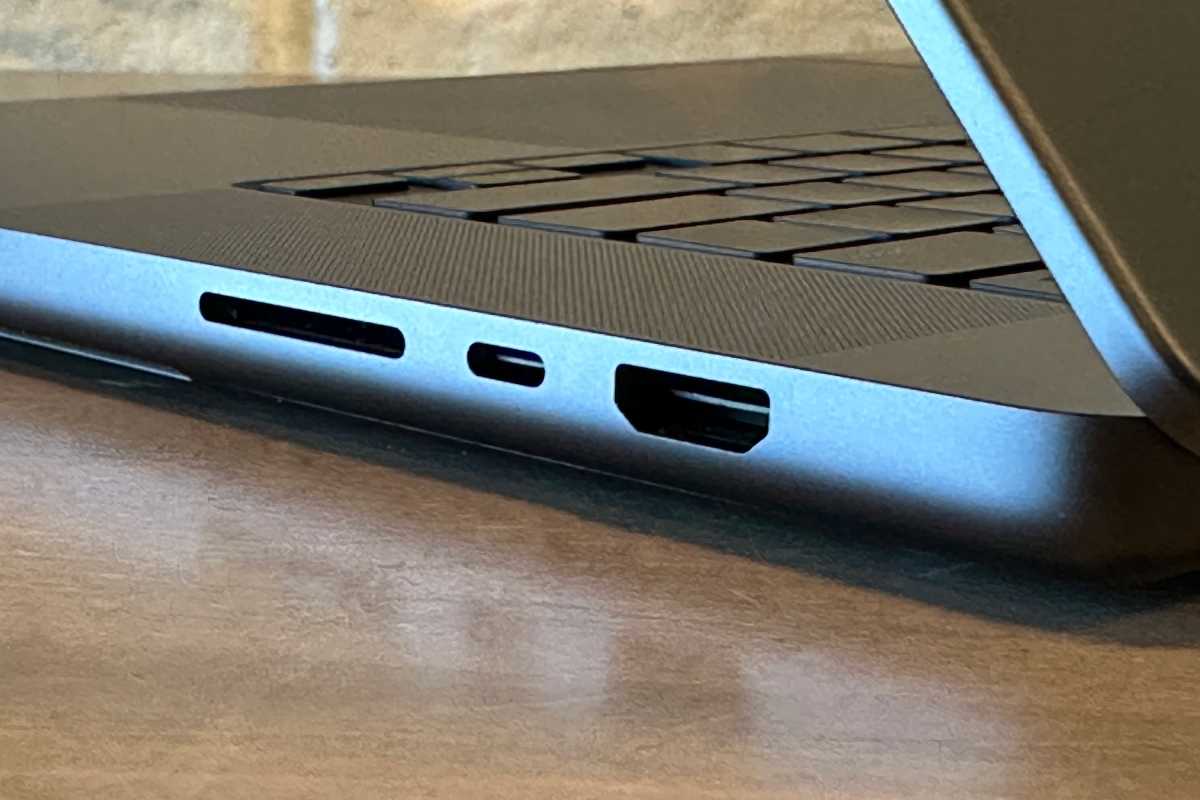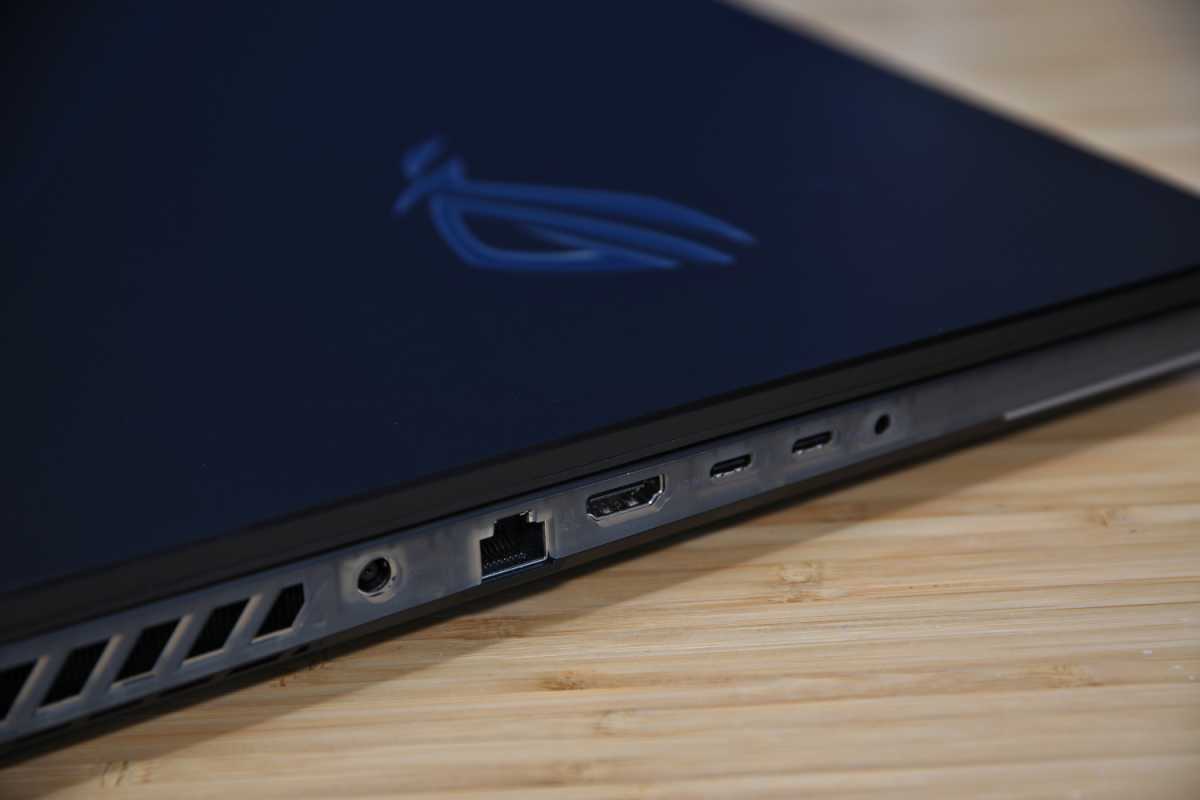A good laptop is only as good as its ports. That’s a saying I just made up but there’s some truth to it. While there are some ultraportable laptops that can make do with just a couple of USB-C connections, trusting you to use adapters for everything else, most people will prefer to have a wider selection on-board. The odd legacy connection, a video output for using external monitors, and that ever-useful headphone jack are handy to have.
Fortunately, most manufacturers appear to have moved beyond the trend of leaning-out laptops to the point of limited connectivity. Many of the best laptops in 2024 come with a solid selection of port options — and, yes, you can always use a hub or docking station to get more.
If you’re buying a new laptop and want to make sure it has all the connections you need, though, what are the ports you should really look out for? While some of these may be more important to you than others, these are the ports you should definitely consider for your next laptop upgrade.
USB-C
Thunderbolt 4 (the small oval ports) is the fastest USB-C can be, but just any old USB-C will do.
IDG / Josh Hendrickson
USB-C has the dubious honor of being the most successful and confusing USB standard in quite some time. Coming off the back of the mess that was USB 3.0 naming, that’s saying something. Where USB-C has made USB technology far more simple — it’s reversible and just about any USB-C device will work with just about any USB-C port — there are a number of caveats to this recommendation.
You want a USB-C port on your laptop for its pure simplicity. Even the weakest of USB-C ports can handle power delivery and basic data transfer speeds up to 5Gbps. And, since just about every new electronic device with USB connectivity is also now using USB-C, you want USB-C on your laptop. But which type of USB-C?
For the absolute best, fastest, most capable USB-C connection, you want Thunderbolt 4. It has the strongest mandated minimum specifications of any USB-C connection and ensures that you get a 40Gbps bidirectional data transfer rate, a minimum of 15W USB power delivery for device charging, and support for up to two 4K displays. You can get up to 100W charging speed on some devices, too, making them great for charging up your laptop.
USB 4 is worth looking for as an alternative, and can in some cases offer even faster data transfers and charging speeds, but it’s not guaranteed in the same way as Thunderbolt 4, so you’ll have to read the fine print. The same goes for Thunderbolt 3, which can be as good as its newer sibling, but typically isn’t.
Ultimately, though? Just make sure a laptop has USB-C at a minimum. It’s the only real “must-have” on this list.
Further reading: Best USB-C cables for charging and data transfer
USB-A

USB-A ports (far right) come in a variety of speeds.
Mattias Inghe
While not essential, because you can just plug an adapter, hub, or dock into your laptop’s USB-C port, it’s nice not to have an additional expense. Why bother with extra adapters and cables when you can just have a couple of native USB-A ports?
These ports can only offer up to USB 3.2 Gen 2 speeds, which works out to 10Gbps, but often you’ll have the slower USB 3.0 5Gbps speed. USB-A can also offer power delivery to connected devices, though it’s usually limited to 12W.
While those specs might sound a little paltry compared to the newer USB-C standards, it’s not a massive concern. These ports are perfect for plugging in external keyboards and mice, the majority of which are still built around USB-A cabling. Unless you’re transferring massive files regularly, too, then a USB-A connection is just fine for most external drives, as well.
3.5mm headphone jack
This is the one that has its firm fans and detractors, but if my 2023 smartphone can come with a headphone jack, my new laptop should have space for it too. As convenient as Bluetooth and wireless headphones and headsets can be, they don’t offer the same low latency or high bit-rate of a wired connection. If you consider yourself any kind of audiophile, then a wired headphone connection is a must.
It’s also great as a backup solution when your battery-powered headset is out of juice and you just want to get into a game with your friends right now. Sure, it’s a little bulky in 2024, but it’s no Ethernet jack. Bonus points if your laptop comes with two 3.5mm jacks for the microphone and headphone separately, too.
HDMI

For simple external displays, HDMI is hard to beat.
Foundry
Arguably the least “essential” of the ports we’ve discussed here, an HDMI port is still one of the easiest ways to address the biggest limitation of most laptops: Their screens are just too small compared to a desktop PC. If you want to use your laptop for regular office work, a bigger screen can make a massive difference, and there’s just no substitute for a big gaming monitor when you really want to enjoy your favorite games.
While USB-C certainly has the specifications to handle this task itself, most monitors are designed around HDMI or DisplayPort connections, and unless your laptop has a new DisplayPort 2.0 connection, HDMI 2.1 is the fastest display connector out there. If your laptop comes with one of those, it can easily output to a 4K 120Hz display and enjoy it in its full glory. Even HDMI 2.0 is fine for 4K 60Hz, or higher refresh rates at lower resolutions.
For the sheer convenience of it all, an HDMI port lets you plug in any HDMI cable you have lying around and get a big screen picture on any big display you have. No adapters, no dongles, no finagling required. Grandma wants to see your holiday photos on a bigger screen and the Chromecast is acting up? Connect your laptop to your TV and away you go.
Honorable mention: Ethernet

Ethernet (to the left of the HDMI port here) is helpful on all laptops but nearly a must-have on gaming laptops, where network speeds are essential.
IDG / Matthew Smith
Ethernet is more of a personal favorite, and certainly not something that most would consider essential, since it’s just not that common on modern ultrabook designs. It’s too big, too bulky, and for most people, completely unnecessary thanks to modern Wi-Fi standards.
But. And it’s a big but. Wi-Fi is temperamental. Wi-Fi can be insecure. Wi-Fi can be congested. When wireless lets you down, or you just want to get online quickly, there’s no real substitute for just plugging in an Ethernet cable and enjoying the consistent quality connection of wired networking, especially if you’re gaming.
Although, like all the ports on this list, you can get excellent Ethernet performance with a USB-C adapter, that’s one more piece of equipment you need to carry with you for if and when you might need it. To avoid that, a built-in Ethernet port is a must-have for some of us. You can even get a 2.5 Gigabit Ethernet connection if you want to make your Wi-Fi jealous.



